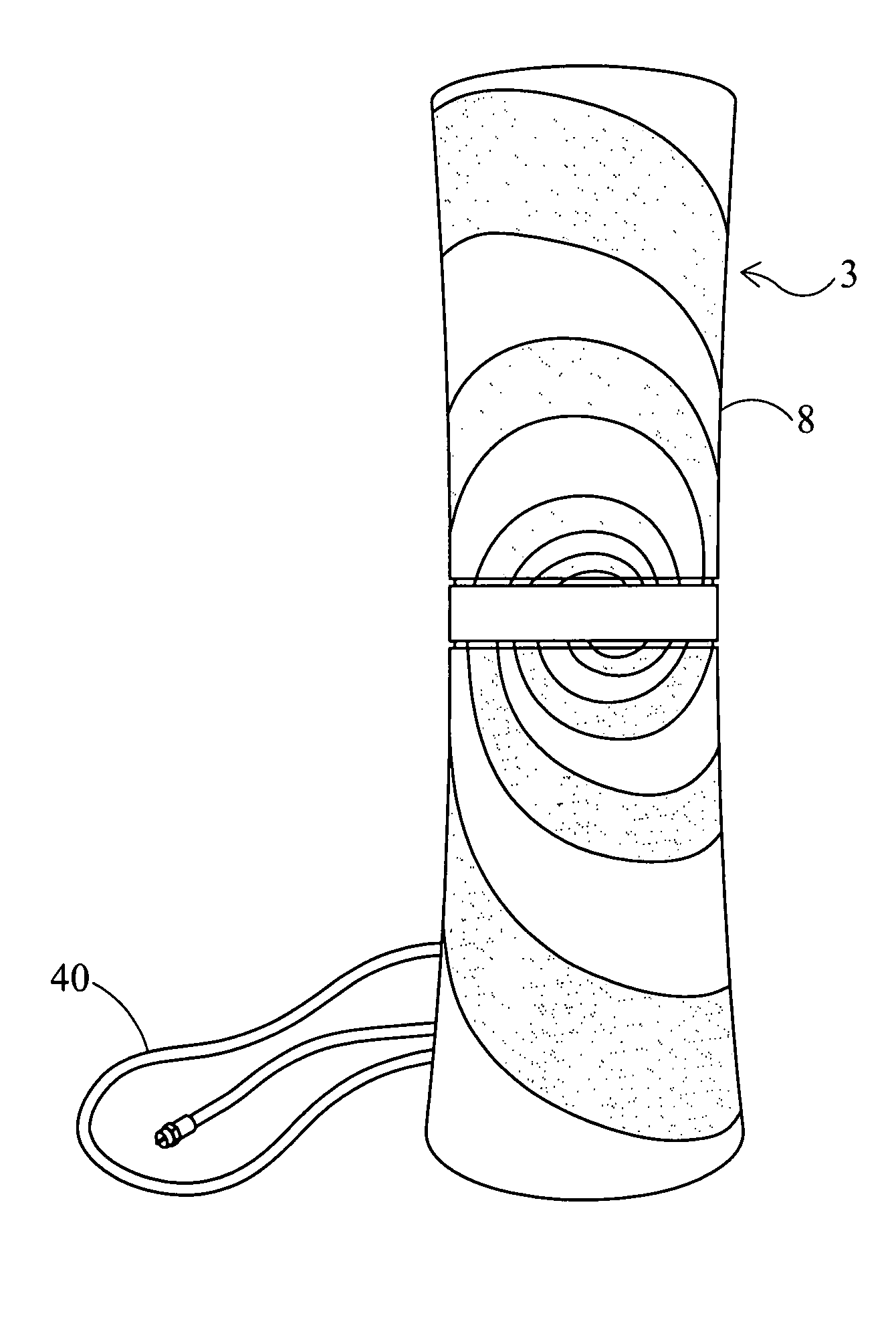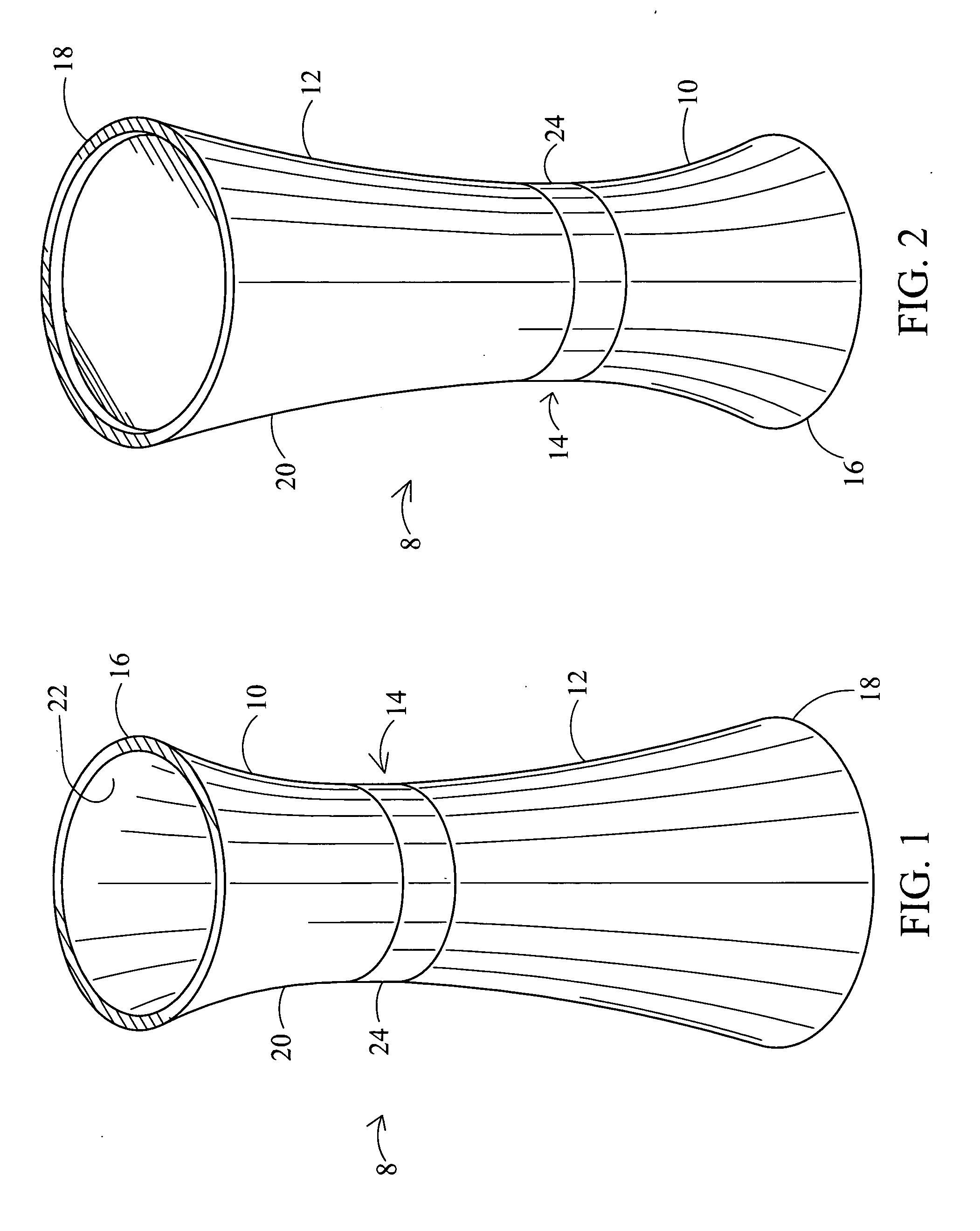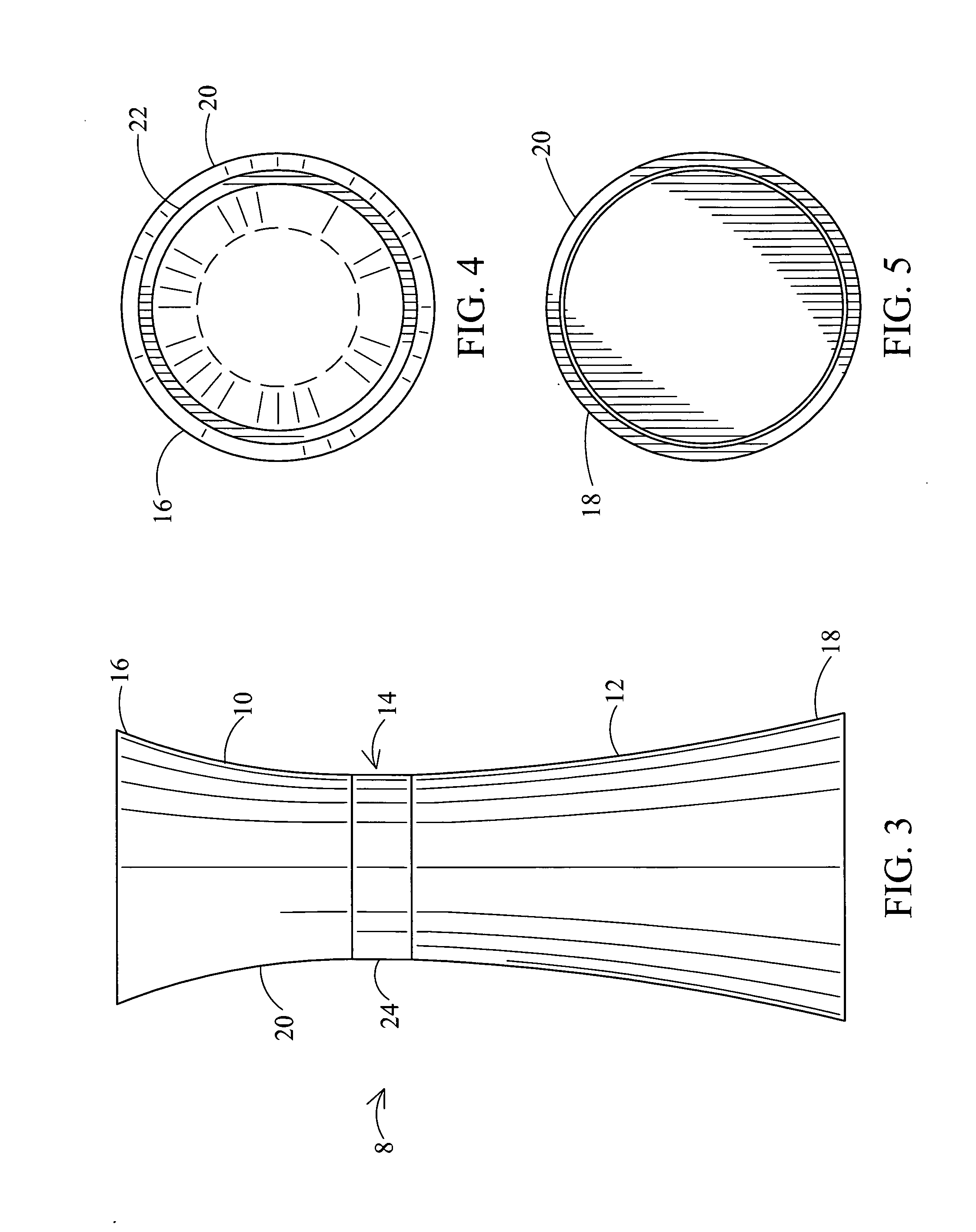Omni-directional antenna in an hourglass-shaped vase housing
a vase-shaped, omni-directional technology, applied in the structure of resonant antennas, loop antennas, radiating elements, etc., can solve the problems of inability to adjust the length and direction of the dipole elements, the physical dimension of the vhf dipole is undetected, and the performance of such conventional indoor vhf/uhf antennas may change in response, so as to achieve good omni-directionality and good television signal reception. , good gain
- Summary
- Abstract
- Description
- Claims
- Application Information
AI Technical Summary
Benefits of technology
Problems solved by technology
Method used
Image
Examples
first embodiment
[0065]Three sets of tests were performed and measurements were taken for three different embodiments of the present invention. The first embodiment is a spiral antenna 3, such as shown in FIG. 6 of the drawings, situated within an hourglass-shaped vase housing 8 having a height of about 395 millimeters and symmetrical conically-shaped top and bottom segments which are joined at the center, each of the upper and lower conically-shaped segments 10, 12 having opposite end diameters of about 115 millimeters, the housing 8 having a relatively narrower middle portion 14 having a diameter of about 98 millimeters. The spiral antenna 3 is center fed.
[0066]The second embodiment of the present invention uses dual bowtie antennas 26, such as shown in FIG. 9 of the drawings, to define a cloverleaf antenna 4. The antenna 4 is housed in a smaller hourglass-shaped vase housing 8 from that of the first embodiment which was tested. The housing 8 includes non-symmetrical upper and lower conically-shap...
second embodiment
[0068]FIGS. 11, 15 and 19 are charts of antenna gain at vertical measured at selected frequencies respectively for each of the three aforementioned tested embodiments, the first being a relatively large housing 8 in which a spiral antenna 3 is situated, the second being a relatively smaller housing 8 having a cloverleaf antenna 4 situated therein and the third in the same sized housing 8 and having the same cloverleaf antenna 4 as the second embodiment but having the outer surface 20 of the housing painted.
[0069]FIGS. 12, 16 and 20 are graphs of antenna gain versus frequency respectively for each of the three tested embodiments of the present invention described previously.
[0070]FIGS. 13, 17 and 21 are graphs of VSWR (voltage standing wave ratio) plotted against frequency respectively for each of the three tested embodiments of the present invention mentioned previously.
[0071]FIGS. 14, 18 and 22 are radiation or antenna patterns at vertical measured at selected frequencies respectiv...
PUM
 Login to View More
Login to View More Abstract
Description
Claims
Application Information
 Login to View More
Login to View More - R&D
- Intellectual Property
- Life Sciences
- Materials
- Tech Scout
- Unparalleled Data Quality
- Higher Quality Content
- 60% Fewer Hallucinations
Browse by: Latest US Patents, China's latest patents, Technical Efficacy Thesaurus, Application Domain, Technology Topic, Popular Technical Reports.
© 2025 PatSnap. All rights reserved.Legal|Privacy policy|Modern Slavery Act Transparency Statement|Sitemap|About US| Contact US: help@patsnap.com



